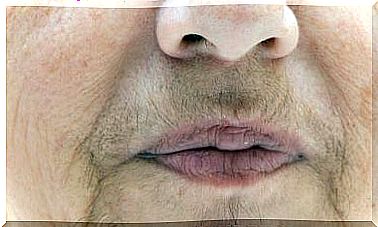Run A Marathon: What Are The Challenges?

A marathon is a challenge for both the body and the mind. There are many physical and psychological processes taking place during the run. Marcelo Ceberio, PhD in Psychology reveals the challenges that each person must face when deciding to take part in such competitions.
Marathons are the most famous running competitions. To run a marathon , you need to be ready to face enormous challenges for the body, muscular and skeletal structures, and the cardio-respiratory system.
At the same time, such a run poses a significant challenge to the mind. The marathon combines our brain and emotions with the training itself.
Emotions, brain images, actions and neurotransmitters all awaken in a marathon runner in complete synergy. Each such run is a personal challenge that provides the feedback necessary to participate in the next competition.
Ritualism during preparation
After each marathon, garbage remains, which the cleaners could not remove. On the route you can find crushed water bottles as well as energy gels shining in the rays of the sun and brochures from other races.
Long distance runners are unlikely to take part in many competitions throughout the year. There aren’t many 42, 30 or 21 kilometers events in the annual running calendar.
This is because the physiology of the human body does not allow it to make significant effort again and again without adequate time to recover after running a marathon.
For the amateur athlete, the marathon consists of three moments: the week before the marathon, the week in which the marathon takes place, and the week after the competition.

When we want to run a marathon, training a week before the competition consists mainly of regenerative or light runs. In addition, there is also a need for rest, especially for the body. In turn, the runner’s brain constantly thinks about the route, times, memories from the last marathon, etc.
This whole week consists of some ritualism and “magic” habits that bring good luck and even clairvoyance. In addition, some adrenaline (and elevated cortisol levels) is constantly present.
There is a certain tension in the muscles that prevents runners from being relaxed. This impression increases as the race day approaches.
Difficulty resting in people who want to run a marathon
For this reason , two days before starting the marathon, try to get the best sleep possible. If the marathon is on a Sunday, you need to get a good night’s sleep on Friday, as Saturday is a busy day.
Symptoms of this tension do not usually appear during the day. Instead, they come at night when you are trying to sleep. They will probably also make you wake up before the alarm goes off.
The morning before the competition
The long-distance runner ritual begins two hours before the start. You are well aware that decent petroleum jelly or other ointments have a magical effect and that there are three key places. Everything that seems trivial or insignificant can become extremely bothersome after running several dozen kilometers.
The next step is to put on the runner’s main gear: running shoes. Of course, these are not new shoes. It is better not to wear anything new on the day of the competition to avoid feeling stiff, uncomfortable and unanticipated abrasions.
Thoroughly washed and used running shoes show signs of use and are tailored to the needs of the runner, having the right shape of the instep, heel support, etc.
At this point, adrenaline puts you in a state of over-alert. The muscles are tense in such a way that you can feel them pulsating inside you. The same tension finds its outlet in the stomach and intestines, forcing you to urinate once, twice, or even three times.
The house is quiet. It is very early, and you use this calmness to prepare yourself before the rest of the family wake up. You watch a beautiful sunrise on a beautiful Sunday morning.
Trying to keep a positive attitude
You sit down in the kitchen and eat microwave-heated pasta for breakfast. You rehydrate properly, just like the days before. Then you eat some fruit and drink a cup of strong coffee. A dash of caffeine will give you the kick you need.
This is a moment of tremendous anxiety when runners need to program positive images into their brains. You put your watch on and make sure it works properly, although you do use it every day.
It’s different today: your watch must not fail you. There are a lot of questions in your head, and many of them have been asking yourself for several days. You are wondering if you trained well, and the high demands you set on yourself lead to the conclusion that you should give a little more of yourself.
I could run more kilometers … I could put even more effort into training …
You grab your backpack with clean clothes and go outside to wait for your running friends to give you a lift. It’s chilly and you say to yourself, “What a great day to run!” .
Of course, you would say the same, trying to stay positive, even if it was cold or the rain would be pouring down. At this hour, the first rays of the sun begin to emerge from behind the clouds.
Marathon: the beginning of the run
You know when the start signal sounds and the electronic clock starts counting down. You are taking your first steps slowly due to the large number of participants in the marathon. Your steps get faster and you start jogging, then gradually you start running.
In a state of full concentration, you listen to your body’s signals and are aware of its tension, muscle aches and emotions, and each of the memories that pop up in your mind along the way.
You get excited when you pass a blind runner or a wheelchair runner. You encourage anyone who has stopped running and is tired or in pain (puts his hands around his stomach). Sometimes you wave at someone who cheers you on and others are too focused to interact.
You join a group that runs at your pace to help you run a few kilometers at the right time. It is important that you slow down and walk the few steps when stopping at a nutritional point to drink some water and isotonic drink.
You know you have to slow down because every time you tried to run and drink at the same time, you always got drunk.
The loneliness of a marathon runner
While the tenderness and support of friends, family and even strangers always accompany long distance runners, deep down they are focused on their own company. Full of concentration, even when training with your friends, you try not to miss a single moment of the excitement of the competition.
The truth is, as a long distance runner, you are alone. Alone with his soul, with his body, with his strategy and with his emotions. For amateurs, the first ten kilometers of the race bring hope for a good run and the illusion of having a better time, if they manage to control their pace and have enough strength for the next 20 kilometers.
One important goal is to reach the middle of the marathon, although for the complicated human brain this moment is a hinge that makes us see the glass either half empty or half full. Some people say, “Come on, half of us are behind us!” Others, on the other hand, think, “It’s only half.”
This approach shows how the marathon runner approaches his whole life: each of us has either a negative or a positive attitude.
Halfway through the route
If it’s not raining, that’s great because while the rain cools you, it soaks your clothes as well. I guess few things are worse than running in wet socks and shoes. Therefore, during the competition, runners will change the mechanics of their movement.
Heat and humidity are another enemies of long-distance runners. The concrete that the streets are poured into, combined with the sun’s rays, draws water and mineral salts out of the body faster, which play a key role in the functioning of your muscles. In other words, your muscles begin to resist the effort.
If long distance runners feel their muscles are in good shape, their mind will encourage them to keep racing. However, if your muscles are tired, you won’t even be able to think clearly. You can enter a dangerous state of overexertion that prevents you from concentrating on your strategy.

A wall at 30 km and a fighting spirit
The biggest enemy you have to face during the marathon is the 30th kilometer. Something is happening in your brain. You are not sure what exactly, but to some extent your head starts to fill with negative thoughts. They instantly influence your ability to enjoy the competition.
However, your body is wise. At this point in the run, the action of endorphins balances catastrophic thoughts and evokes pleasure.
In the case of amateur runners, the last 10 kilometers are often associated with racing thoughts, muscle pain, general fatigue and anxiety about finishing the run. The mind never stops thinking. However, such symptoms appear with varying degrees of intensity, and sometimes even not at all. It is worth noting that the context can often make them worse.
This is the stage where you can become distracted and start focusing on your surroundings. What’s more, you may even start to rely more on what’s going on outside than on what’s going on inside you. You pay more attention to who is ahead of you than to who you have overtaken.
The last 10 kilometers: a distance full of contradictions
During this stage of the competition, many factors emerge, many of them contradictory:
- Cognitive: Spontaneous negative thoughts clash with positive ones.
- Organic: Mineral salt deficiencies, muscle aches, exertion-induced cramps, wounds, abrasions, or blisters due to rubbing contradict the body’s tendency to stabilize these dysfunctions.
- Emotional and chemical : Anxiety about ending a run or anger from a physical condition clashes with the well-being caused by a dose of endorphins circulating through the body. And when it comes to your central nervous system, dopamine and cortisol appear in it, which motivate you not to quit.
However, these factors are not at all separate from each other. Rather, they are in complete synergy and influence each other. For example, a simple positive thought can trigger the production of a dose of endorphins and dopamine, which create the mood needed to endure muscle pain.
Remember that around 30 kilometers you get an energizing gel. It’s a kind of molasses that looks like childhood cough syrup. However, its consumption is associated with certain risks.
At this stage of the competition, your carbohydrate reserves are diminished. By consuming a pack of gel, you are giving your body a high GI injection. Your body detects an increase in blood sugar and immediately secretes insulin to counteract this phenomenon. This has the opposite effect to what was expected.
The need to motivate yourself when running a marathon
This is where motivation is more important than ever. You do your best to find the motivation you need by saying things to yourself, silently cheering on yourself as if you were to cross the finish line first.
Sometimes you get a support bonus from people who watch the run. It is an endless choreography that moves from the inner world to the outer world. The inner and outer voices motivate and cheer the runners, especially in those moments when they feel worse.
In addition to these technical explanations, marathon runners have a great fighting spirit and make sacrifice a form of surrender, an icon of their work in trying to reach the finish line. And all these sensations are pleasant.
How do you know when you are achieving this goal?
When you no longer count the kilometers that you have covered, but start to count the kilometers that still have to be run. In the last 5 kilometers when you see the 37 kilometer marker. Not only do you have just a few kilometers left, there is also very little time to reach the finish line!
Run a marathon: nothing is the same after running these 42,195 meters
Within you, not only do you feel the pain disappear, but rather you are closer to a feeling of relief. As the kilometers go by, your attention shifts from pain to being able to finish your run.
When the 40 kilometer marker appears in front of the amateur runner’s eyes, he begins to feel almost immediately that he has already made it. The last 2,195 meters is a breeze.
Expectant visions of crossing the finish line keep your endorphins working at full capacity. And additionally, they reduce the pain that torments you.
Your thoughts go beyond the competition itself, and in your head you are already at the finish line. You focus on the final episode.

End of run
When the mileage marker announces the 41st kilometer, this is the last kilometer to victory. During the last kilometers, time does not matter anymore. The most important thing is to get to the finish line. You are not running a marathon to win it … Just cross the finish line to become a hero!
You imagine your family, your spouse, your children, your parents and your friends waiting for you at the end of the tour. Even those buddies who run like you, but don’t dare to run a marathon.
You shudder when you see that there are more and more fans. This is the prologue sign of your arrival. You hear shouts: “Come on, only 300 meters more”, applause, cheering …
You enter the final stretch with the finish line looming in the distance. By doing this, you accelerate and straighten up. You search among the fans for the faces of your children, spouses … everyone who came to cheer you on.
You may start to feel strong emotions. Sometimes tears may even run down your face. It no longer matters how long you had to run to get to this point, or how many people appeared before you. You feel a winner because you have reached the end. Just a few more meters and you will cross the finish line!
Life gives us a unique experience, but this moment, reaching the finish line after running a marathon, is one of the emotions that should be experienced as intensely as possible.
Marathon runners remember every second of the run, even a few days after the race. They go through each stage of the competition, and the whole experience manifests itself in their imagination in the form of vivid images and feelings until they set a date for the next competition.
And as soon as you are ready to run that distance again, you will move on to face the next challenge.









